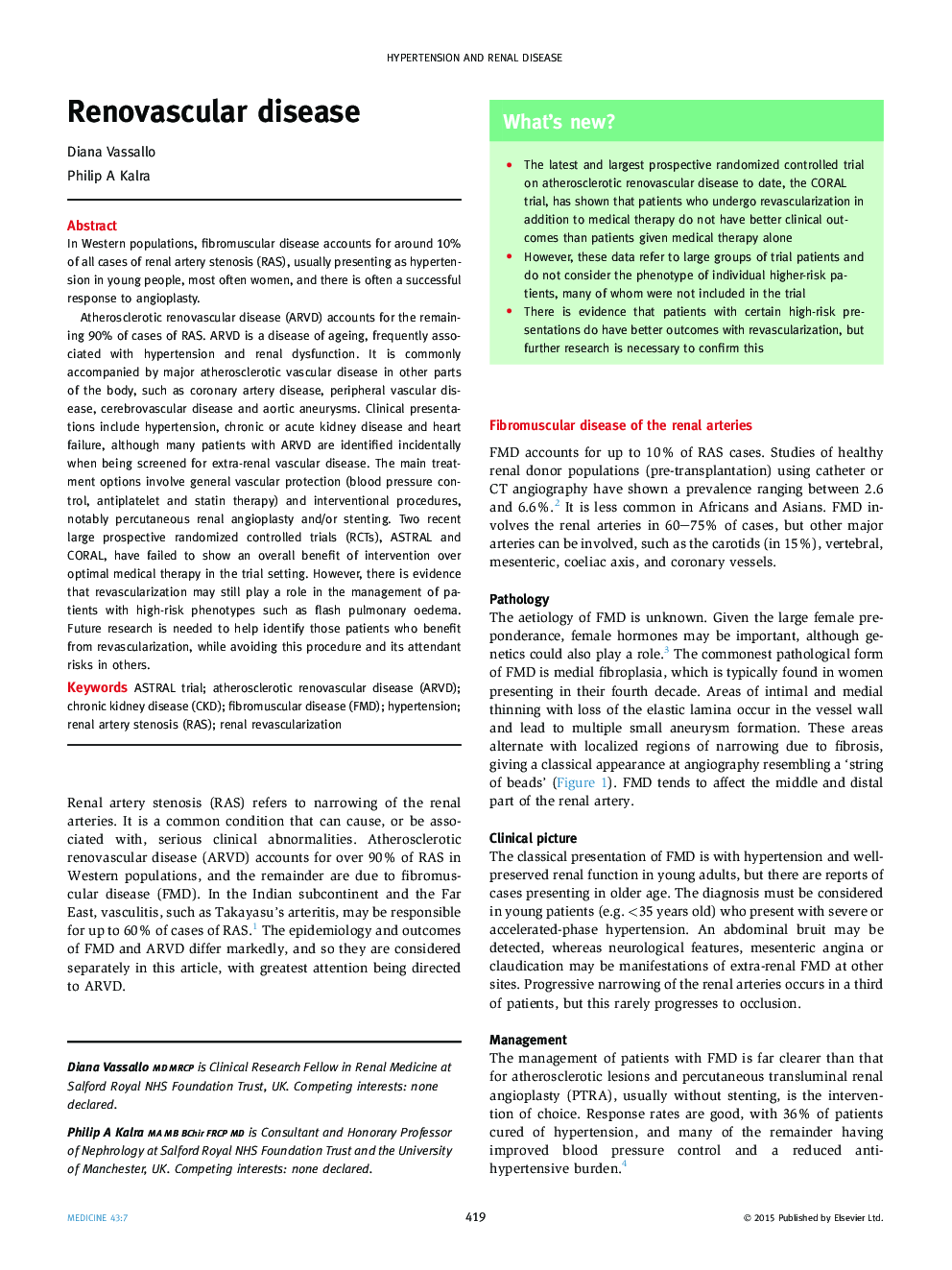| Article ID | Journal | Published Year | Pages | File Type |
|---|---|---|---|---|
| 3803702 | Medicine | 2015 | 6 Pages |
In Western populations, fibromuscular disease accounts for around 10% of all cases of renal artery stenosis (RAS), usually presenting as hypertension in young people, most often women, and there is often a successful response to angioplasty.Atherosclerotic renovascular disease (ARVD) accounts for the remaining 90% of cases of RAS. ARVD is a disease of ageing, frequently associated with hypertension and renal dysfunction. It is commonly accompanied by major atherosclerotic vascular disease in other parts of the body, such as coronary artery disease, peripheral vascular disease, cerebrovascular disease and aortic aneurysms. Clinical presentations include hypertension, chronic or acute kidney disease and heart failure, although many patients with ARVD are identified incidentally when being screened for extra-renal vascular disease. The main treatment options involve general vascular protection (blood pressure control, antiplatelet and statin therapy) and interventional procedures, notably percutaneous renal angioplasty and/or stenting. Two recent large prospective randomized controlled trials (RCTs), ASTRAL and CORAL, have failed to show an overall benefit of intervention over optimal medical therapy in the trial setting. However, there is evidence that revascularization may still play a role in the management of patients with high-risk phenotypes such as flash pulmonary oedema. Future research is needed to help identify those patients who benefit from revascularization, while avoiding this procedure and its attendant risks in others.
